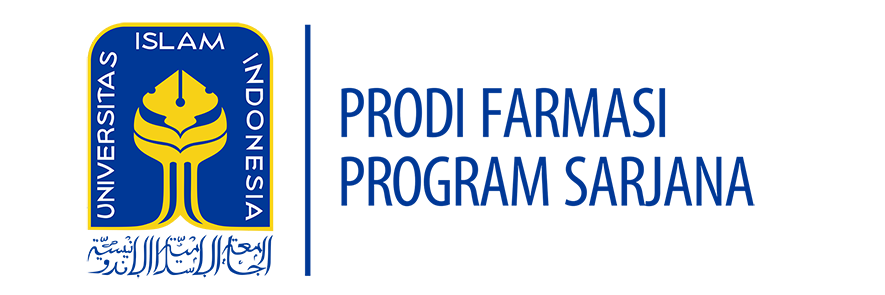COURSE INFORMATION
| Module Name | Physical Pharmacy | |||
| Module Level, if applicable | 1st year | Types of teaching and learning | Teaching discussion and project development | |
| Code, if applicable | SFA-108 | Class size | 50 – 60 | |
| Semester | 2nd Semester | Attendance time (hours per week per semester) | 2 h | |
| Person responsible for the module | apt. Bambang H. Nugroho, MSc. | Forms of active participation | Discussion | |
| Lecturer(s) | Apt. Bambang H. Nugroho MSc.
Prof. Dr. apt. Yandi Syukri, MSc. DR. apt. Siti Zahliyatul Munawiroh |
Workload | Lecture: 3 (hour) x 14 (meeting) = 42
Preparation and follow up 6 (hour) x 14 (self-learning) = 56 |
|
| Language | English- Indonesia | Total workload | 126 hours | |
| Relation to curriculum | Compulsory course | Credit points | 3 CU | |
REQUIREMENTS
| Requirements according to examination regulations | Minimum attendance at lectures is 75% (according to UII regulation). |
| Recommended prerequisites | – |
| Related course | – |
| Study and examination requirements and forms of examination | Midterm and final term, project assignment and presentation |
MODULE OBJECTIVES/INTENDED LEARNING
By the end of this course students should be able to:
- Describe the concept of materials used as pharmaceutical ingredients.
- Describe thermodynamic laws, distribution and surface phenomena.
- Describe concepts on solubility and related disperse system.
- Describe theory and concepts on drug stability.
- Describe theory and concepts on rheology and micromeritics
CONTENT
This course aims to support program learning outcomes in the form of professional and ethical abilities, basic knowledge of pharmaceutical science, cooperation, analytical skills, quality assurance and halal pharmaceutical preparations. The scope of this course is pharmaceutical materials, thermodynamics, distribution phenomena, solubility, dispersion systems, drug stability, rheology, micromeritics.
MEDIA EMPLOYED
Blended Learning
READING LISTS
- Sinko, PJ. 2016. Martin’s Physical Pharmacy and Pharmaceutical Sciences. Wolters Kluwer
- HC Ansel, LV Allen, NG Popovich (1999), Pharmaceutical Dosage Forms and Drug Delivery Systems, Williams & Wilkins.
- ME Aulton (1998), Pharmaceutics: The Science of Dosage Form Design, Churchill Livingstone.
- Patrick J Sinko, 2011, Martin Farmasi Fisika dan Ilmu Farmasetika, EGC
